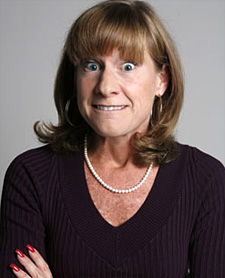
Photo: Nayu Kim
What does it take to be really good — if not great — at something?
A lot depends on the skill or event. For instance, “In expert tennis, 80% of the points are won, while in amateur tennis, 80% are lost,” says economist Eric Falkenstein. “The same is true for wrestling, chess, and investing: Beginners should focus on avoiding mistakes, experts on making great moves.”
The first step towards mastering a skill, then, lies in assessing whether the ability observes rigid rules or not. Knowing that will help you prioritize deliberate practice over taking creative liberties and vice versa. So if the rules never change, like in classical music or mathematics, you can “out-study” the competition to make it to the top.
But in less structured fields — such as entrepreneurship, rock and roll, and other humanities — taking creative risks or “making great moves” as Falkenstein says takes precedence. It’s the fastest way to greatness. In other words, strict standards reward mastery first. Unregulated skills reward creativity more.
Of course, many disciplines demand both mastery and risk-taking to become great, not to mention raw talent. But knowing where to start — whether by mastery or creativity — is half the battle.

Although I’ve been bored with NASA since the ’80s, this commemorative logo, released in 2008, looks slick.

At the very least, the team responsible for making the hideous new logo look like a Pepsi-fied version of Strong Sad. Why didn’t the company just refresh their packaging without the logo change? The new cans, and even the “Pepsi” logotype, look slick — I’ll give them that — but they would’ve looked much better with the original, classic logo. Here’s a mock-up I made to prove the point. But what do I care: Coke tastes way better, no?
See also: YouTube: The rebranding of Pepsi
 American Way has a whimsical article in their April 15 issue which profiles distinct-looking, non attractive amateur models, and how they’re making one New York agency popular with advertisers seeking greater image authenticity.
American Way has a whimsical article in their April 15 issue which profiles distinct-looking, non attractive amateur models, and how they’re making one New York agency popular with advertisers seeking greater image authenticity.
DiNardo, at 6 feet tall and 170 pounds, with stringy locks held back by a headband and tufts of hair encircling his chin, could be any random guy you’d pass on the street. And that’s the reason that Simon Rogers, owner and CEO of Ugly NY, wants to represent him. “Tom’s very arresting, isn’t he?” Rogers says admiringly.
Ugly commissions range from an occasional few hundred dollars to $2,000/shoot — hardly substantial, but gravy for people who were never looking to model in the first place. I love seeing people zig while others zag and get rewarded for it.
Those who know me well know I like video games. I don’t get to play them as much as I’d like to, but I do have the opportunity to write about them as a freelancer. So why is video game dialogue so cheesy? Why do I get embarrassed sometimes when my wife comes in the room only to find me suffering garbage line reading and poor scripts to get to the action? This is something of a pet-peeve for me as a hobbyist and something I recently wrote a feature on. From the article:
“The once fledgling video game industry with its minuscule budgets forced early game makers to wear several different hats, including storytelling ones even if they didn’t have prior experience. “When video games began, particularly on the PC, they were made by one, two, and three-person teams,” says Newsweek’s N’Gai Croal, a vocal proponent against amateur game dialogue. “Very few of these people had professional writing experience.”
As gaming grew to more than $14 billion a year, its storytelling failed to grow up with it. You can read the full article on Edge.


 See also:
See also: 


 American Way has a
American Way has a